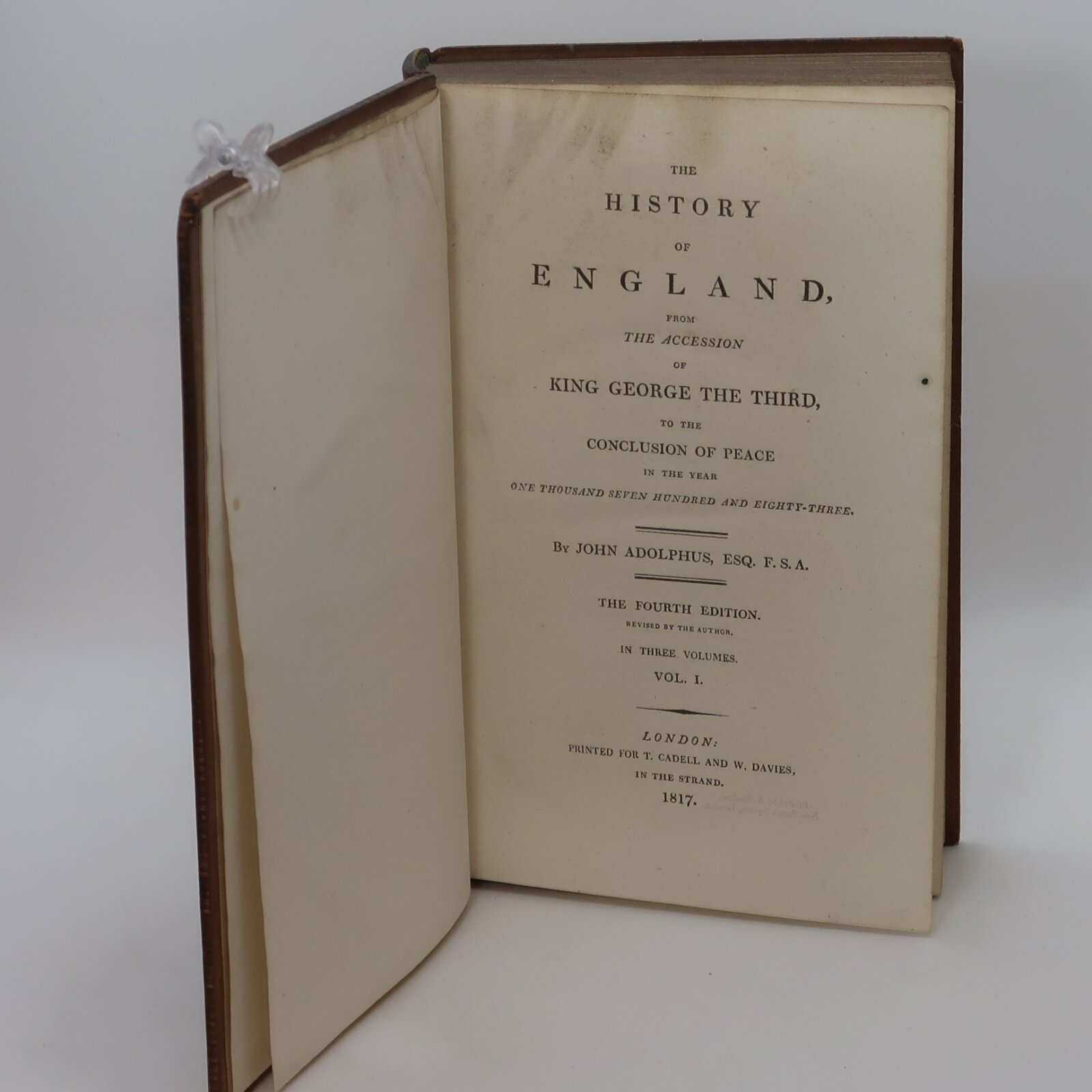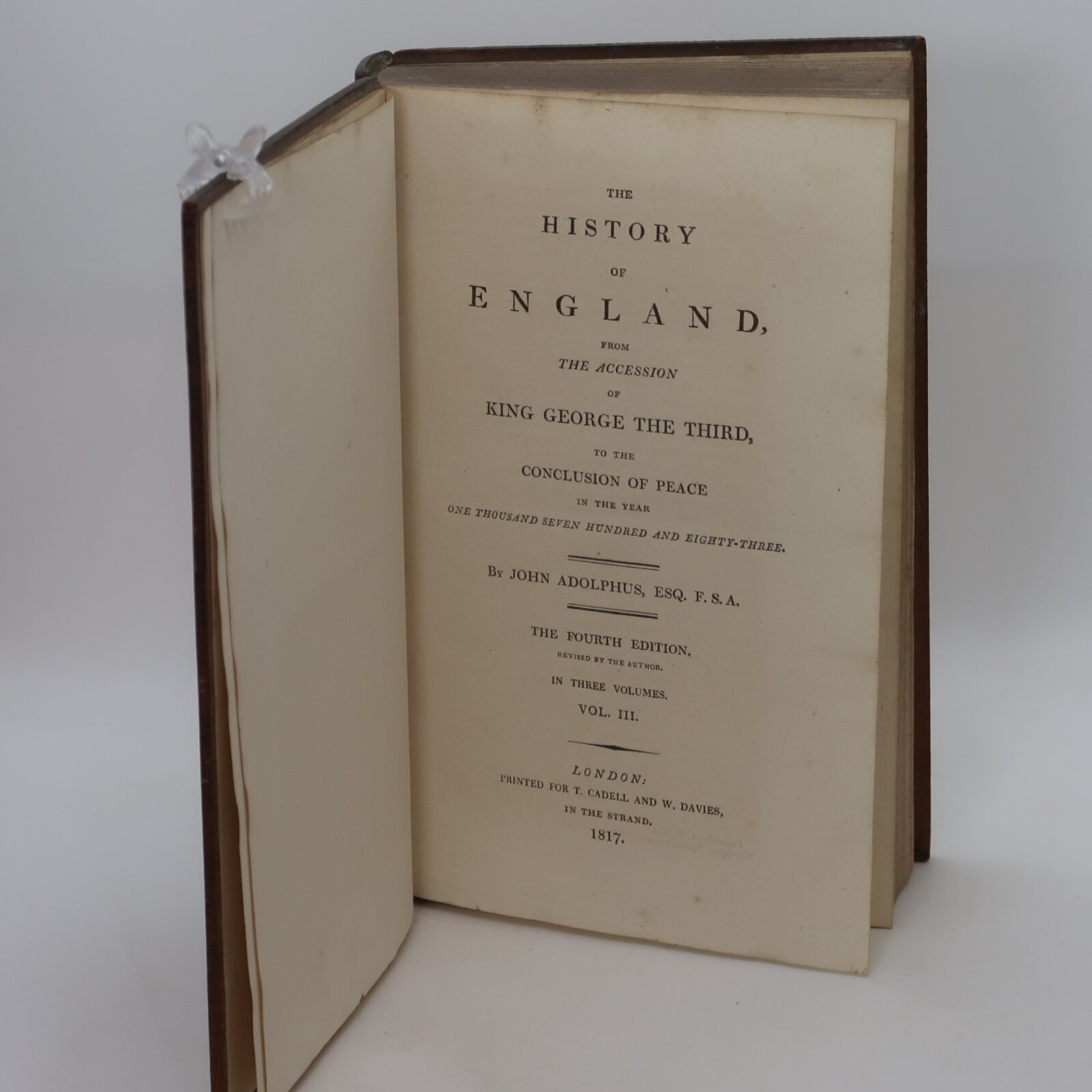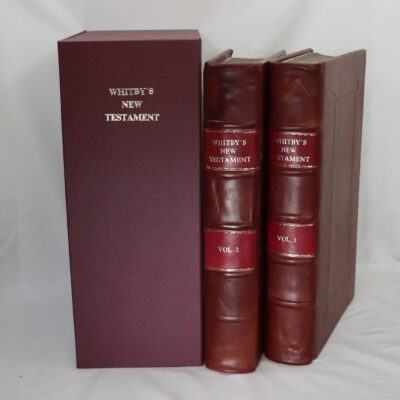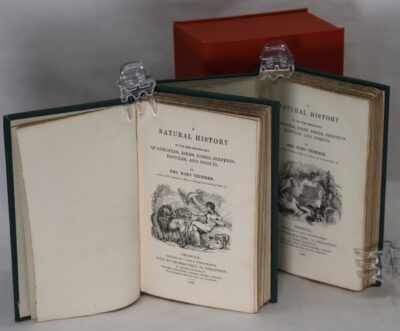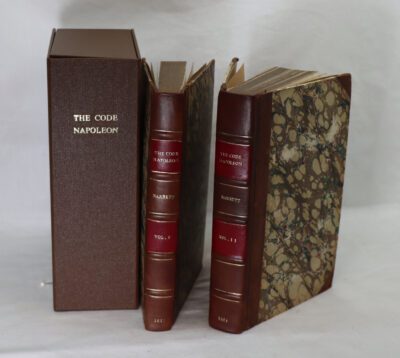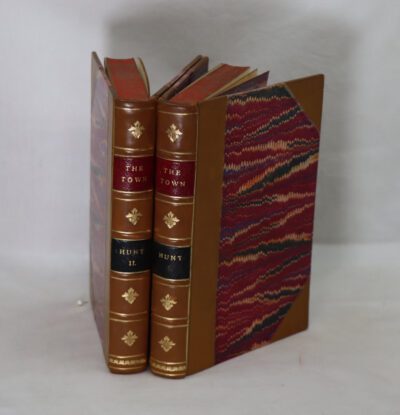Adolphus's History of England. Volumes I, II & III.
By John Adulphus FSA
Printed: 1817
Publisher: T Cadell & W Davies. London
Edition: fourth edition
| Dimensions | 15 × 22 × 3.5 cm |
|---|---|
| Language |
Language: English
Size (cminches): 15 x 22 x 3.5
Condition: Fine (See explanation of ratings)
FREE shipping
Your items
Item information
Description
Volumes 1, 2 and 3. Tan leather bindings, Red and green nameplates with gilt lettering and tooling. Dimensions are for one volume.
In 1802 appeared Adolphus major work, the History of England from the Accession of George III to the Conclusion of Peace in 1783. It included summaries of parliamentary debates, and Adolphus was praised for it in issue No. 2 of the Edinburgh Review. The papers of George Dodington, 1st Baron Melcombe had been placed at Adolphus’s disposal in the preparation of his history, and they enabled him to throw light on the conduct of Lord Bute, and on the political transactions of the earlier years of the reign of George III, who, in conversation, commented on the accuracy with which some of the first measures taken after his accession had been described.
John Adolphus was born on 7 August 1768, he was of German background. His grandfather had been domestic physician to Frederick the Great, and wrote a French romance, Histoire des Diables Modernes. His father lived for a time in London supported by a wealthy uncle, who provided the son with education, and sent him at the age of fifteen to be placed in the office of his agent for some estates in St. Kitts. Adolphus returned to London after something over a year and was articled to an attorney. He was admitted an attorney in 1790, but after a few years began to write.
The success of his history and the influence of Archdeacon William Coxe brought Adolphus into close connection with Henry Addington, then prime minister. Addington put him on a salary, for political services which included electioneering and pamphleteering. He entered the Inner Temple, and in 1807 he was called to the bar.
He joined the home circuit and devoted himself specially to criminal work. At the Old Bailey he worked his way to the leadership, which he retained for many years. The first of his notable forensic successes was his defence in 1820 of Arthur Thistlewood and the other Cato Street conspirators. Among the cases in which he subsequently distinguished himself were the trials of John Thurtell, James Greenacre, and François Courvoisier.
Within a few weeks of entering his seventy-seventh year, he died on 16 July 1845
John Adolphus wrote Biographical Memoirs of the French Revolution (1799) and History of England from the Accession of George III to the Conclusion of Peace in 1783 (1802), and other historical and biographical works.
He acquired the friendship of Archdeacon Coxe by helping him in the Memoirs of Sir Robert Walpole. In 1799 appeared his first acknowledged work, Biographical Memoirs of the French Revolution, strongly anti-Jacobin in tone, and differing widely from the Biographical Anecdotes of the Founders of the French Republic, published anonymously in 1797, and often erroneously ascribed to Adolphus. He wrote the memoirs in the British Cabinet (1799), a series of portraits of more or less distinguished Englishmen and Englishwomen, from Margaret of Richmond to the second Lord Hardwicke.
In 1802 appeared his major work, the History of England from the Accession of George III to the Conclusion of Peace in 1783. It included summaries of parliamentary debates, and Adolphus was praised for it in issue No. 2 of the Edinburgh Review. The papers of George Dodington, 1st Baron Melcombe had been placed at Adolphus’s disposal in the preparation of his history, and they enabled him to throw light on the conduct of Lord Bute, and on the political transactions of the earlier years of the reign of George III, who, in conversation, commented on the accuracy with which some of the first measures taken after his accession had been described.
In 1803 Adolphus published a History of France from 1790 to the Peace of Amiens, and a pamphlet, Reflections on the Causes of the present Rupture with France, in vindication of the policy of the English government. According to his son Adolphus wrote A Letter to Robert Ward, Esq., M.P. (1804), to Robert Ward who had written a defence of William Pitt the Younger in his party quarrel with Addington.
In 1818 he published, in four volumes, The Political State of the British Empire, containing a general view of the domestic and foreign possessions of the crown, the laws, commerce, revenue, offices, and other establishments, civil and military; in 1824, Observations on the Vagrant Act and some other Statutes, and on the Powers and Duties of Justices of the Peace, in the main a protest against some “nanny state” legislation of the time; and in 1839 the Memoirs of John Bannister the actor, whom he had known well.
His history had gone through four editions when, in his seventieth year, Adolphus began the task of continuing it to the death of George III. Vol. I. was re-issued in 1840. Vol. VII., closing with the fall of the Addington administration, appeared in 1845, and Adolphus was working on the eighth volume when he died.
Adolphus wrote several chapters of Charles Rivington’s Annual Register and papers for the British Critic. His final contributions to periodical literature were biographical sketches of William Garrow and John Gurney for the Law Magazine. The anonymous Memoirs of Queen Caroline (London, 2 vols., 1824) have been ascribed to him.
The Edinburgh Review is the title of four distinct intellectual and cultural magazines. The best known, longest lasting, and most influential of the four was the third, which was published regularly from 1802 to 1929.
The third Edinburgh Review became one of the most influential British magazines of the 19th century. It promoted Romanticism and Whig politics. (It was also, however, notoriously critical of some major Romantic poetry.)
Started on 10 October 1802 by Francis Jeffrey, Sydney Smith, Henry Brougham, and Francis Horner, it was published by Archibald Constable in quarterly issues until 1929. It began as a literary and political review. Under its first permanent editor, Francis Jeffrey (the first issue was edited by Sydney Smith), it was a strong supporter of the Whig party and liberal politics, and regularly called for political reform. Its main rival was the Quarterly Review which supported the Tories. The magazine was also noted for its attacks on the Lake Poets, particularly William Wordsworth.
It was owned at one point by John Stewart, whose wife Louisa Hooper Stewart (1818–1918) was an early advocate of women’s suffrage, having been educated at the Quaker school of Newington Academy for Girls.
It took its Latin motto judex damnatur cum nocens absolvitur (“the judge is condemned when the guilty is acquitted”) from Publilius Syrus.
The magazine ceased publication in 1929.
Want to know more about this item?
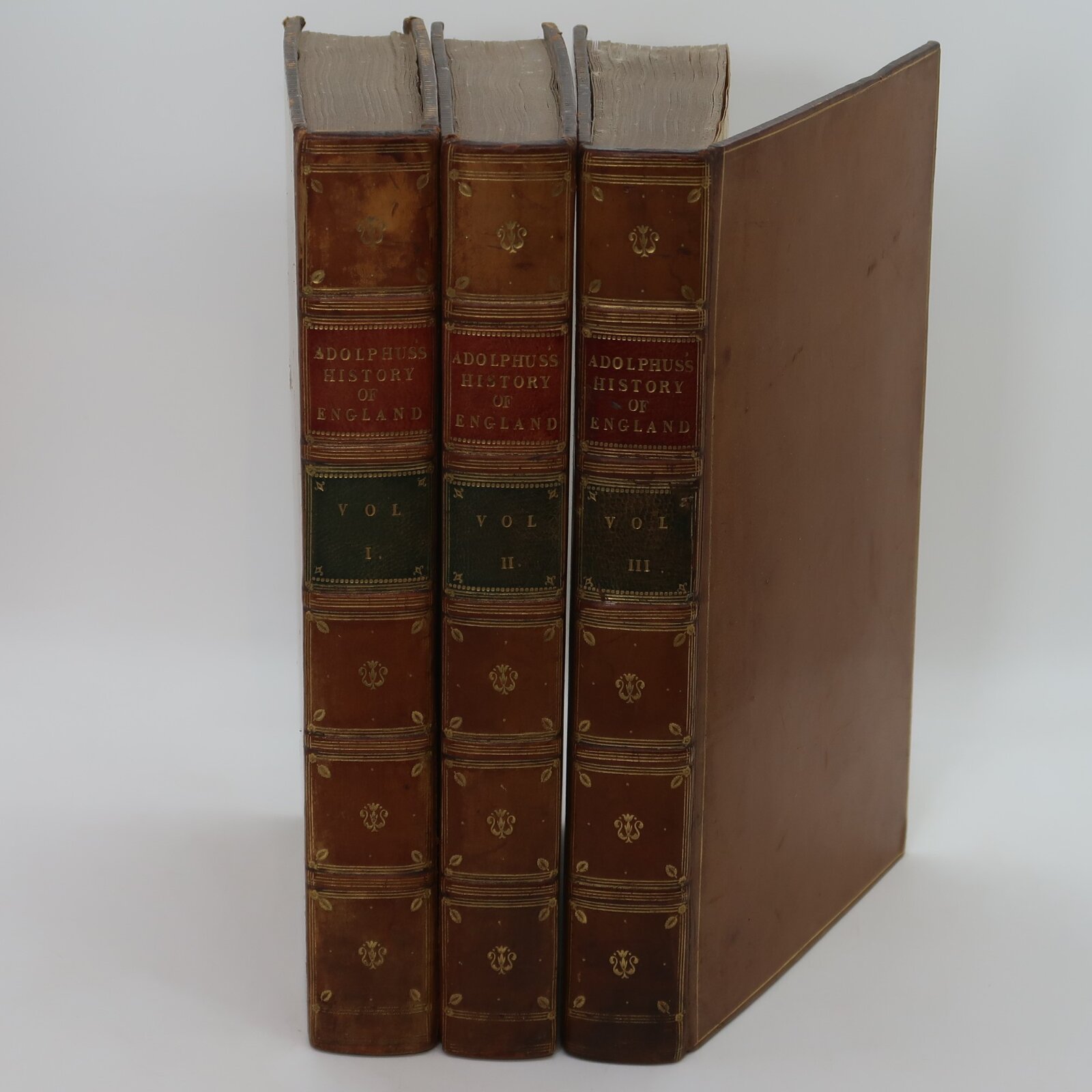
Related products
Share this Page with a friend

